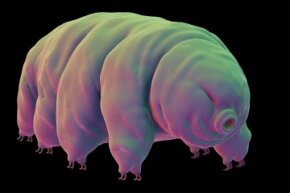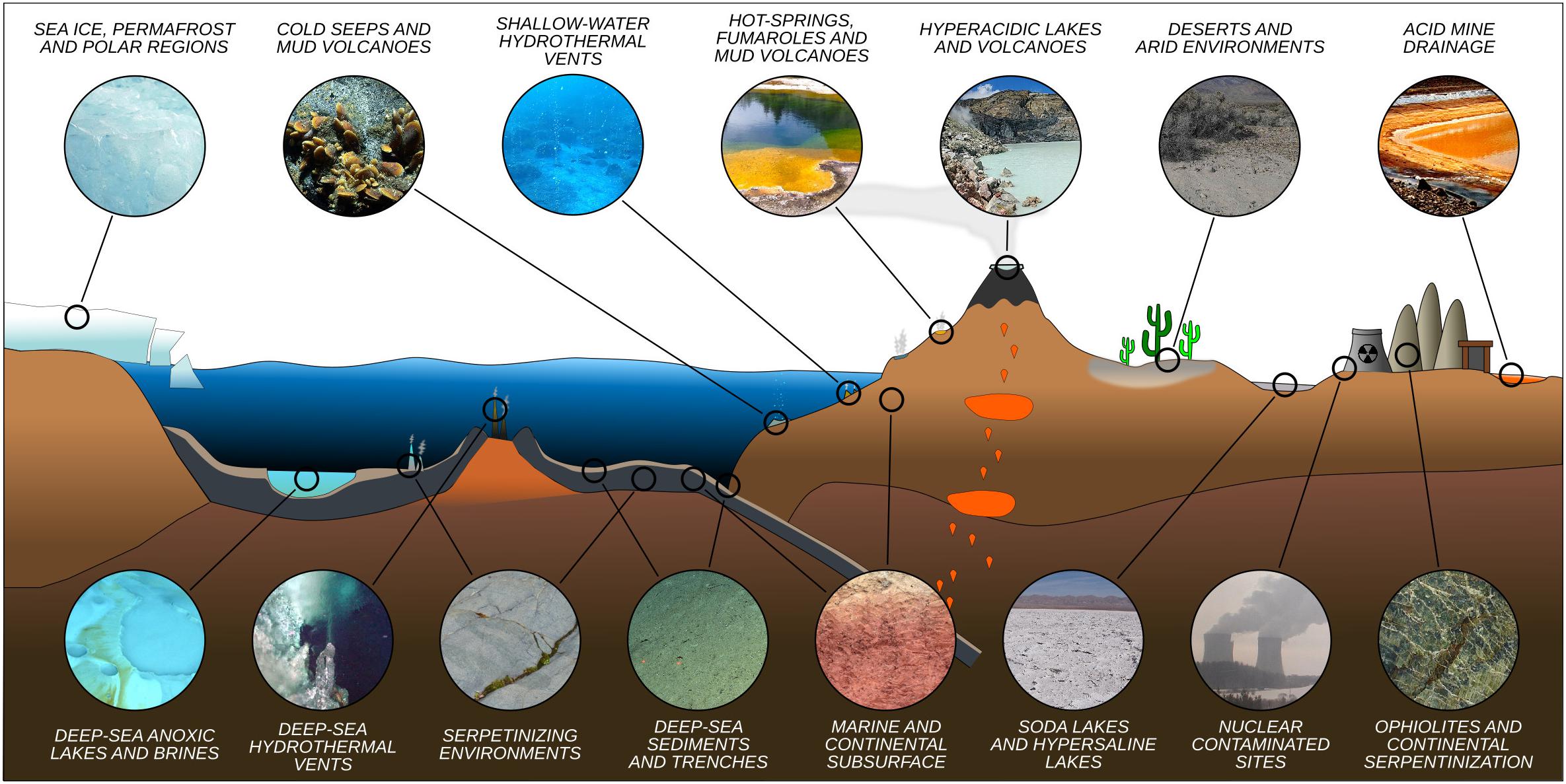Tun State or dehydrated, dessicated, dormant tardigrades
Congratulations!
To find this clue, you would have learned about the microanimal called the tardigrade, or more commonly referred to as the water bear.
These microanimals are able to withstand extreme conditions with them being found in every place in Earth's biosphere.. and now maybe on the moon!
Some tardigrade species are able to withstand temperatures as low as 1K (which is one 1 Kelvin above absolute zero - where the particles freeze completely and nothing can get any colder than that! That's -272 °C/-457 °F) and all the way up to 420 K (146 °C/296 °F 🔥). Impressive!


Black and white image: Hypsibius dujardini tardigrades, SEM by Willow Gabriel http://tardigrades.bio.unc.edu/ Source: Willow Gabriel, Goldstein Lab, CC BY-SA 2.5, via Wikimedia Commons. Colorful image: Sebastian Kaulitzki/Science Photo Library
These little creatures are so durable they have survived all five major extinctions that occurred on Earth and are the first species to go to the moon and live there. Tardigrades are able to do this since they can dehydrate themselves to enter a dormant stage called cryptobiosis. This state allows them to survive extreme temperature, and even radiation and go without water or food for extend periods. You might have seen this called the tardigrade tun state since they curl up into a little dehydrated ball called a tun.
Cryptobiosis is something a lot of science fiction uses for long voyages in space where the person goes into 'suspended animation'. Teen Genetic Engineering Hero Patricia Rea was inspired by the cryptobiosis state of the Tardigrade for her research in making yeast survive below freezing. You can hear Patricia speak about her project here in a video by her school board.
Although tardigrades species survive extreme environments, since they do so as dehydrated and in a dormant stage (tardigrades require moisture to be active), they are not considered true extremophilic organisms; they are only able to withstand extreme conditions rather than live in them permanently. But did you know there are some species on this planet that are true extremophiles, organisms that survive in extreme environments such as the inside of a volcano or inside a block of ice? These types of organisms are extremely specialized and have adapted over time to withstand these extreme conditions to thrive in those types of environments. The planet's ecosystem is truly amazing!

Representative idealized cross section of Earth’s crust showing the diversity of extreme environments and their approximate location. Source: Living at the Extremes: Extremophiles and the Limits of Life in a Planetary Context https://www.frontiersin.org/article/10.3389/fmicb.2019.00780
Of course, scientists are very inspired and curious about these extreme organisms. Like Patricia, biotechnologists around the globe are studying their DNA codes, or using the organisms directly to complete tasks. One of the most famous use of extremophiles technologies in science is for PCR.
PCR or Polymerase chain reaction is a widely used method that lets you make millions or billions copy of a sample of DNA code so that you can "amplify" the sample and study or use it. From forensic science to genetic engineering, diagnosis and monitoring of hereditary diseases to amplification of ancient DNA and parentage testing all the way to the diagnosis of infectious diseases PCR helps us everyday. Indeed, it is such a fundamental and popular technology that you may have used it yourself in school, university or in a lab. The enzymes that make the PCR reaction work were found by Kary Mullis thanks to the extremophiles T. aquaticus. Thank you T. aquaticus!
Thermus aquaticus Bacteria deposited on a Millipore filter of 0.22 µm (scale = 1 µm) Source: Photo: Diane Montpetit (Food Research and Development Centre, Agriculture and Agri-Food Canada). Wikimedia
Other applications of extremophiles in biotechnology include in Biofuels. Some extremophiles are called methanogenic extremophiles. These can live almost anywhere and are the most widespread. What makes them particularly useful for biofuels is that they can take simple organic compound and use them to synthesize methane as their source of energy! So scientists use methanogenic and thermophilic (who can survive extreme temperatures) organisms to take in some food sources like sugars, cellulose and other waste products to produce methane, butanol and biodiesel. While these are done as small scale experiments for now, scientists have recently found some extremophile strains of algae, Cyanidium caldarium, that seems promising for larger scale production.
Extremophiles are separated in different classes depending on which extreme environment they live in. Here are some:
- Acidophile: an organism that thrives in acidic environments with pH levels of 3 and below.
- Alkaliphile: an organism that thrives in alkaline environments with pH levels of 9 and above.
- Barophile: an organism that lives in high-pressure environments, such as deep-sea habitats.
- Cryptoendolith: an organism that lives in microscopic spaces within rocks, such as pores between aggregate grains. These may also be called endolith, a term that also includes organisms populating fissures, aquifers, and faults filled with groundwater in the deep subsurface.
- Halophile: an organism that lives in habitats with extremely high salt concentrations. The Sea monkeys (Artemia salina) you might have grown as a child are actually halophiles! These brine shrimp thrive under extreme salt conditions and live in salt lakes, salt swamps, and seas.
- Hypolith: an organism that lives underneath rocks in cold deserts.
- Metallotolerant: an organism capable of tolerating high levels of dissolved heavy metals in solution, such as copper, cadmium, arsenic, and zinc.
- Osmophile: an organism with optimal growth in environments with a high sugar concentration.
- Psychrophile: an organism that survives in extreme cold conditions and low temperatures; between −20 °C to +10 °C or −4 °F to 50 °C.
- Radiophile: an organism that thrives in conditions with high levels of radiation, including ultraviolet and nuclear radiation.
- Thermophile: An organism with optimal growth at temperatures above 45 °C (113 °F). However, an organism that thrives in environments with extremely high temperatures; between 80–122 °C or 176-252 °F will be called an hyperthermophile
- Xerophile: an organism that lives in extreme dry conditions.
Of course, you can also find polyextremophiles, organisms that qualifies as an extremophile under more than one category. Crazy!
Discover more extremophiles: National geographic, Wikipedia, BiologyDictionnary

